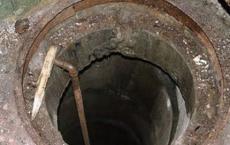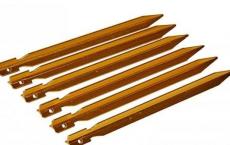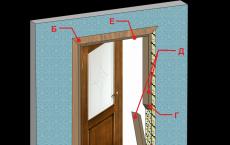We make an infrared heater with our own hands
In the conditions of our climate, almost every winter is very severe and during this period quite strong and prolonged frosts can be recorded, which can significantly exceed the existing heating systems for houses and apartments. At critically low temperatures, the heating system simply cannot cope or entails significant costs of energy carriers, such as gas and electricity.
A great option to help with heating are various compact room heaters, one of which is an infrared heater. But the price for really high-quality devices is quite high, so you decided to tell you how to make an infrared heater with your own hands.
The principle of operation and design of the IR heater
The whole principle of operation of a film IR device lies in electromagnetic radiation, which is emitted by special devices in its design. Under the conditions, namely the necessary heating of such an environment, the device begins to radiate a rather large amount of heat. Under the influence of this electromagnetic radiation and a certain temperature, the emitter heats up and begins to give its temperature to the environment.
In order for the whole process to be successful and give the required temperature indicator, it is necessary that some conditions are fully met:
- The incoming mains voltage must be stable and are at around two hundred and twenty volts.
- The presence of a properly designed emitter in the form of an incandescent lamp or a film IR coating.
- The presence of a reflector in the design. It performs the function of a guiding mechanism, and reflects all the heat in the direction you need, thereby making the entire heater a directional device.
- Temperature controller with built-in or external sensors. It allows you to regulate the temperature regime and more accurately set the temperature in the premises.
Film IR heaters have a very simple design. First of all, they are based on two glued films, the first layer serves as a thermal reflector, and the second is used as a protective layer. They protect the structure from damage, and insulate users from the shock of the passing current. Between the films there are special metal threads that heat up and give off heat in the IR spectrum.
Thus, by assembling a structure that will meet the above requirements, you will be able to provide the necessary level of thermal comfort for your house or apartment. Thanks to the directional principle of action, you can make a separate zone that will be heated. This helps to increase savings and heat only those areas that you need for comfortable work or leisure.
We make with our own hands
One of the highest quality homemade IR heaters is a graphite-based heater. Let's first analyze what we need to assemble such a device:
- As you already understood, a certain amount of graphite is needed, preferably in the form of a powder. The quantity depends on the size of the heater you want to make yourself.
- Plastic plates. Their size is also individual and depends on the required dimensions of the device. They need to have two pieces, the same size.
- Adhesive mixture, it is best to buy "epoxy".
- Wire with plug. You can buy both new and find the old one in your garage. Select the length based on the distance from the installation site to the nearest power source.
- Voltage regulator or special controller.
- Means for insulation and fasteners.
 Graphite is crushed and mixed with epoxy glue - this is how a graphite conductor is obtained
Graphite is crushed and mixed with epoxy glue - this is how a graphite conductor is obtained To apply glue, you will also need to have a brush available. If graphite is in the rods, prepare a tool to grind it into powder. Now, having collected everything you need, you can start assembling our device:
- We start by mixing graphite powder glue. It is worth noting that the greater the amount of graphite in the mixture, the higher the heating temperature will be. Do not add too much of it, as the plastic washes to melt.
- We apply the resulting substrate to the surface of plastic plates, each separately. The application should take place in uniform strokes of a zigzag shape, while it is absolutely impossible to make passes.
- We connect the bare ends of the wire to the graphite compound and glue two plastic plates and wait for it to dry completely.
- After the glue is fully strengthened and securely connected our structure, a temperature regulator, controller or device for adjusting the incoming voltage can be connected to the circuit.
- After that, we carefully isolate all joints and connections. After that, the heater will be completely ready for use.
 Scheme of the future heater
Scheme of the future heater Now you can hang the assembled device on the wall or place it on the floor and get the necessary warmth and comfort in the room. The average heating temperature of such a device is sixty to seventy degrees Celsius. If more or less graphite is added during assembly, you can increase or decrease the operating temperature accordingly.
Since the surface of the device can get quite hot, it is best to install it out of the reach of children so that they cannot harm themselves.
For greater efficiency, a thermal reflector should be placed between the heater and the wall. You can use both special and regular foil, but the second option will be slightly worse.



